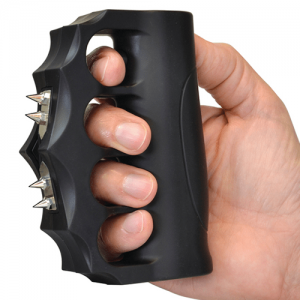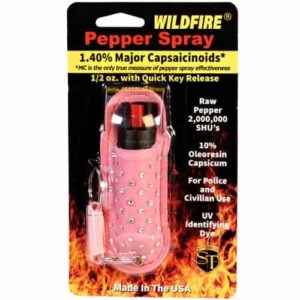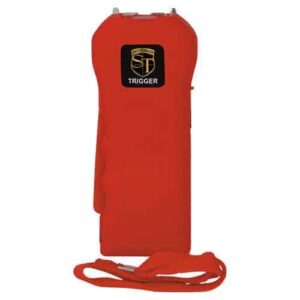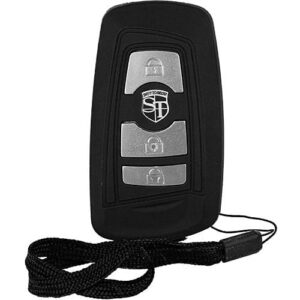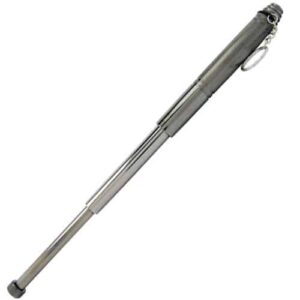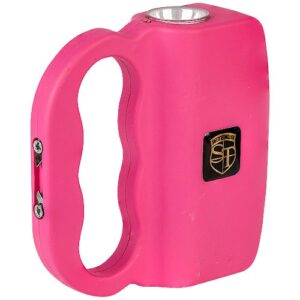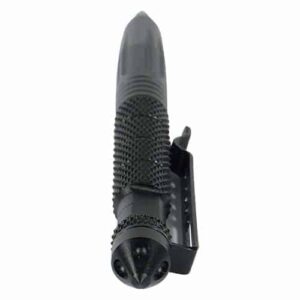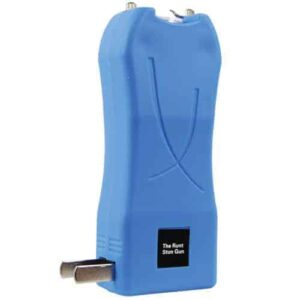Imagine you’re out for a walk with your furry companion, enjoying the fresh air and quality time together. Suddenly, an aggressive stray dog charges towards you and your four-legged friend. In a split second, you need to defend yourself and protect your pooch. That’s where pepper spray for dogs comes in handy. This article will guide you on the safe and effective use of this self-defense tool, ensuring the well-being of both you and your canine companion in potentially dangerous situations.
Table of Contents
ToggleChoosing the Right Pepper Spray
Considerations for Choosing Pepper Spray
When it comes to choosing the right pepper spray for dogs, there are a few important considerations to keep in mind. Firstly, make sure that the pepper spray you select is specifically designed for use on animals. This ensures that it is effective in deterring dogs while minimizing harm. Secondly, consider the size and range of the spray. Opt for a product with a sufficient range to keep you at a safe distance from the dog. Lastly, check the expiration date on the pepper spray to ensure its effectiveness.
Read Labels and Instructions
Before using any pepper spray, it is crucial to carefully read the labels and instructions provided. Familiarize yourself with the dosage and recommended usage. Pay attention to any specific precautions or warnings mentioned on the packaging. Following the instructions diligently ensures that you use the pepper spray correctly and maximize its effectiveness when faced with a threatening situation.
Check for Legal Restrictions
It is essential to be aware of the legal restrictions surrounding the use of pepper spray for dogs. Different countries, states, and municipalities may have varying regulations on the purchase and use of pepper spray. Some areas may require a license or permit, while others may place restrictions on the strength and concentration of the spray. Do thorough research and consult with local authorities to ensure that you are in compliance with the law when using pepper spray for self-defense against dogs.
Practicing Proper Handling
Understand the Effects of Pepper Spray
Before using pepper spray, it is important to understand its effects on both animals and humans. Pepper spray contains capsaicin, an active ingredient that causes severe irritation, pain, and temporary blindness. While the effects are temporary and non-lethal, they can be distressing for dogs. Understanding the physiological effects of pepper spray helps you make informed decisions when using it to protect yourself from aggressive dogs.
Wear Protective Gear
To ensure your safety while handling pepper spray, it is advisable to wear appropriate protective gear. This includes gloves and eye protection to prevent accidental contact with the spray. Wearing protective gear not only safeguards you from any potential harm but also allows you to handle the situation with confidence and focus on your self-defense strategy without any distractions.
Practice Aim and Spray Techniques
To effectively use pepper spray in a high-pressure situation, it is crucial to practice your aim and spray techniques beforehand. Find an empty area or utilize designated practice targets to simulate real-life scenarios. Practice your aim, ensuring you are comfortable with the spray trajectory and can direct it accurately towards the target. By honing your aiming and spraying techniques, you will be better prepared to handle a threatening dog.
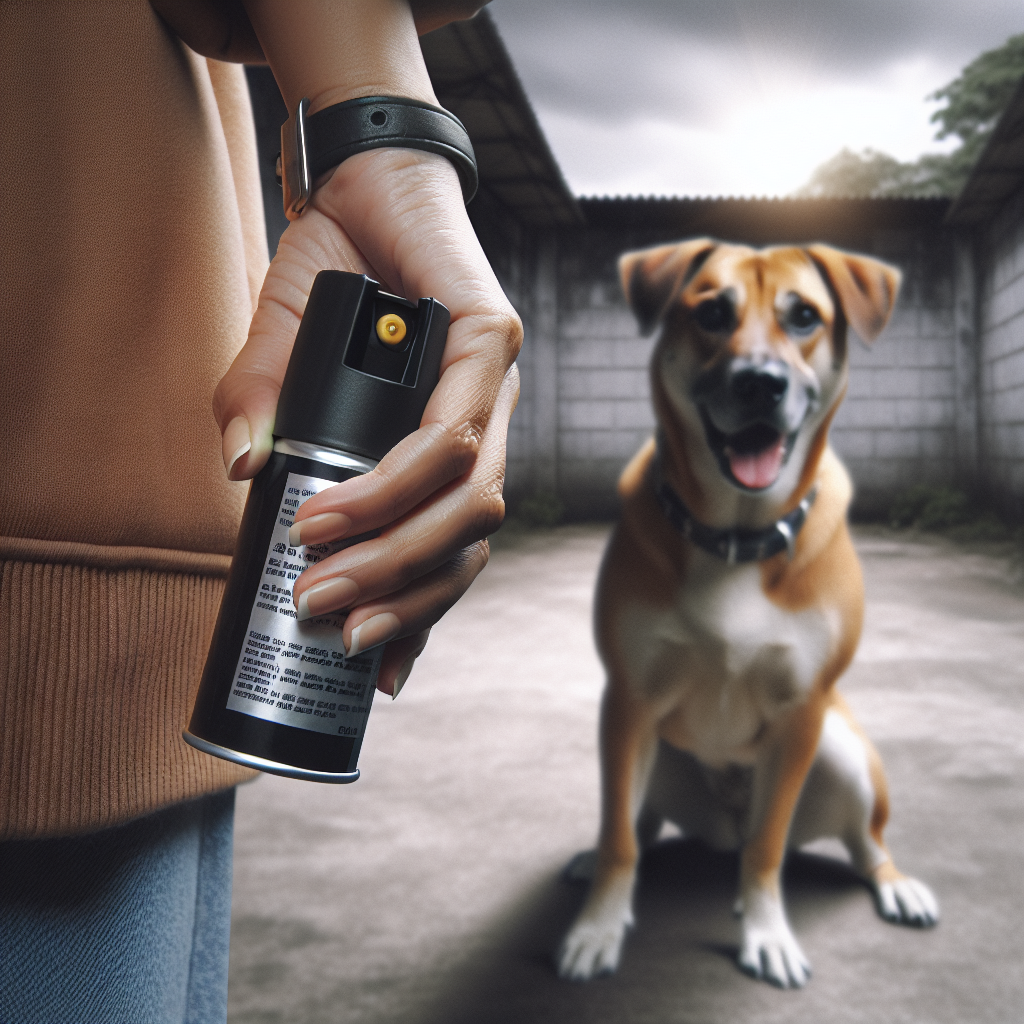
Creating a Safe Environment
Survey the Area for Potential Hazards
When encountering a threatening dog, take a moment to survey your surroundings and identify any potential hazards. Look out for obstacles or objects that may impede your movement or hinder your ability to escape. These could include uneven terrain, nearby traffic, or other animals. By being aware of your surroundings, you can better navigate the situation and take necessary precautions to ensure your safety.
Keep a Safe Distance from the Dog
Maintaining a safe distance from the threatening dog is paramount to avoid any physical harm. Dogs have varying levels of territorial aggression, and getting too close may escalate the situation. It is recommended to stay at least 10-15 feet away from the dog, allowing you enough time and space to react defensively if needed. Keeping a safe distance reduces the risk of a dog lunging and ensures your safety while handling the situation.
Ensure Escape Routes
Before approaching or attempting to deter a threatening dog, always identify potential escape routes. Familiarize yourself with nearby exits, such as open gates, doors, or paths. It is crucial to have a clear plan on how to retreat safely in case the situation becomes unmanageable. By having multiple escape routes in mind, you can act swiftly to protect yourself and create distance between you and the dog if necessary.
Approaching a Threatening Dog
Assess the Level of Threat
When faced with a potentially aggressive dog, it is important to assess the level of threat it poses. Observe the dog’s behavior and body language to gauge its mood and intentions. Signs of aggression may include raised hackles, bared teeth, or a stiff body posture. If the dog appears calm and shows no signs of aggression, it may be best to keep your distance and avoid any confrontation. However, if the dog exhibits clear signs of aggression, taking appropriate action to protect yourself becomes necessary.
Use Verbal Commands and Body Language
Before resorting to using pepper spray, try using verbal commands and body language to deter the dog. Use a firm and authoritative voice to issue commands such as “Stop!” or “Go away!” Maintain a confident posture by standing tall and facing the dog directly. Avoid making sudden movements or frantic gestures that may escalate the dog’s aggression. In some cases, assertive verbal commands combined with confident body language may be enough to discourage the dog from approaching further.
Maintain Eye Contact
Maintaining eye contact with a threatening dog can serve multiple purposes. Firstly, it demonstrates confidence and assertiveness, helping to establish your position as the alpha in the encounter. Secondly, it allows you to closely monitor the dog’s behavior and anticipate any sudden movements. However, it is important to strike a balance and avoid aggressive or prolonged eye contact, as this may be seen as a challenge and could potentially escalate the dog’s aggression. Use eye contact strategically, adapting to the specific situation and the dog’s response.
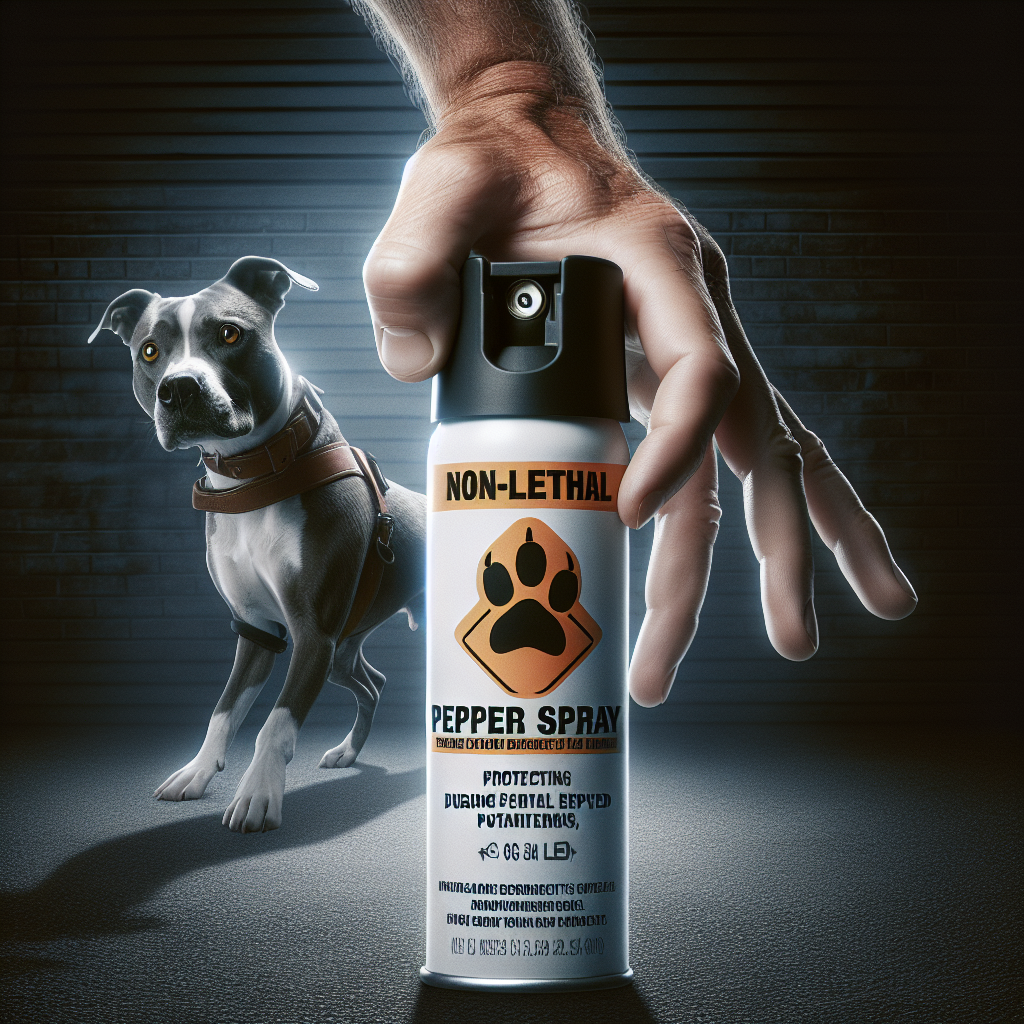
Effective Use of Pepper Spray
Choose the Right Moment to Deploy
When using pepper spray for self-defense against a threatening dog, timing is crucial. It is essential to choose the right moment to deploy the spray to maximize its effectiveness. Wait for the dog to approach within a reasonable distance, ensuring that the spray will reach its face. Deploying the pepper spray too early may result in wastage, while deploying it too late may give the dog an opportunity to get too close. Choose a time when you feel you have the best chance of deterring the dog effectively.
Aim for the Face and Eyes
To effectively deter a threatening dog, it is important to aim the pepper spray directly at its face and eyes. The eyes are the most sensitive areas of a dog’s face, and the spray’s effects will be most potent when applied there. Additionally, the face is a more accessible target compared to other parts of the dog’s body. Aim for the middle of the dog’s face, spraying in a sweeping motion to maximize coverage. By aiming accurately, you increase the chances of quickly incapacitating the dog and giving yourself an opportunity to escape to safety.
Apply Short Bursts
When deploying the pepper spray, it is recommended to use short bursts rather than a continuous stream. This ensures better control over the amount of spray used while preventing wastage. Short bursts of pepper spray are often more than sufficient to deter a dog, as the effects are immediate and intense, allowing you to create distance and seek safety. Practice using short bursts in a controlled environment to familiarize yourself with the spray pattern and to prevent accidental overuse during a real-life encounter.
Caring for the Dog After Exposure
Avoid Touching the Affected Area
After a dog has been exposed to pepper spray, it is essential to avoid touching the affected area. The spray’s capsaicin can easily transfer to your hands and spread to other parts of the dog’s body, causing further discomfort. Refrain from petting or soothing the dog in any way until the spray’s effects have subsided. By avoiding contact, you minimize the risk of accidental contamination and allow the dog to recover naturally.
Flush with Water
One of the most effective ways to alleviate the discomfort caused by pepper spray is to flush the affected area with water. Find a water source, such as a faucet, hose, or a water bottle, and gently rinse the dog’s face and eyes. This helps to dilute the capsaicin and flush it away, providing relief to the dog. Be cautious and avoid using high-pressure water streams, as this could potentially cause further irritation or injury. If available, a mild saline solution can also be used to cleanse the eyes and soothe any discomfort.
Seek Veterinary Assistance
If the dog continues to exhibit signs of distress, inflammation, or eye irritation following exposure to pepper spray, it is advisable to seek veterinary assistance. A veterinarian is trained to assess and treat discomfort or potential injuries caused by the spray. Seeking professional help ensures that the dog receives appropriate care and treatment for a swift recovery. Remember to inform the veterinarian about the incident, disclosing the use of pepper spray, to provide a complete picture of the dog’s condition.
Educating Yourself on Legalities
Understand State and Local Laws
Before using pepper spray for self-defense against a threatening dog, it is crucial to educate yourself on the state and local laws regarding its use. Laws regarding the possession, purchase, and use of pepper spray can vary significantly depending on your location. Some jurisdictions may have specific regulations on the potency, concentration, or volume of pepper spray allowed. Carry out thorough research, consult with legal professionals, or contact local law enforcement to ensure you are legally compliant when using pepper spray.
Be Aware of Legal Consequences
Using pepper spray to defend yourself against a threatening dog may have legal consequences, depending on the circumstances and applicable laws. It is important to be aware of potential legal repercussions in your jurisdiction. While protecting yourself is a priority, it is equally important to understand the legal boundaries, including the concept of proportionate force and self-defense laws. Consulting with legal professionals can provide you with guidance on navigating any legal implications associated with using pepper spray.
Consult with Authorities
If you find yourself in a situation where you need to use pepper spray against a threatening dog, it is advisable to report the incident to the appropriate authorities. This includes informing animal control agencies, local law enforcement, or other relevant entities in your area. Reporting the incident helps to create a record, ensures that measures can be taken to address any potential danger, and provides valuable information on aggressive animals in the community. Consulting with authorities also allows them to guide you with any additional steps or resources available to prevent similar incidents in the future.
Alternatives to Pepper Spray
Loud Noise Deterrents
In certain situations, loud noise deterrents can be a helpful alternative to using pepper spray. Portable personal alarms or air horns emit a loud and high-pitched sound that can startle and deter dogs. These devices are easily activated and can be carried on your person for quick access. However, it is important to note that some dogs may not be deterred by noise alone, especially if they are highly agitated or motivated by aggression. Therefore, it is essential to assess the situation and determine whether a noise deterrent is appropriate.
Ultrasonic Devices
Ultrasonic devices emit high-frequency sounds that are inaudible to humans but can be extremely discomforting to dogs. These devices are designed to deter aggressive or threatening dogs without causing any harm. By pressing a button or triggering a motion sensor, the ultrasonic device emits the high-frequency sound, which can startle and deter the dog. Ultrasonic devices are compact, easy to carry, and can be an effective alternative to pepper spray in certain situations.
Chemical-Free Dog Repellents
For individuals who prefer to avoid using pepper spray or noise deterrents, there are chemical-free dog repellents available on the market. These repellents typically utilize naturally derived ingredients such as citronella or lemongrass to create an unpleasant scent or taste for dogs. Chemical-free dog repellents come in various forms, including sprays and granules, and can be used as a proactive deterrent for potential confrontations with aggressive dogs. However, it is important to note that the effectiveness of chemical-free dog repellents may vary depending on the individual dog and their motivation.
Preventing Dog Attacks
Identifying Aggressive Behaviors
Preventing dog attacks starts with being able to identify aggressive behaviors in dogs. Some common signs of aggression in dogs include growling, barking, lunging, snarling, raised hackles, and a stiff or frozen posture. Additionally, dogs that show signs of fear, anxiety, or territoriality may also be prone to aggressive behavior. Understanding and recognizing these behaviors can help you assess potentially dangerous situations and take appropriate action to prevent an attack.
Avoiding Eye Contact with Unknown Dogs
When encountering an unknown dog, avoiding direct eye contact can help prevent the situation from escalating into aggression. Direct eye contact may be perceived as a threat or challenge by dogs, especially those with high levels of territoriality or anxiety. Instead, maintain a relaxed body posture and keep your gaze averted or focused on something else. This non-confrontational approach can reduce the likelihood of a dog interpreting your actions as a provocation and lower the risk of an attack.
Using Dog Deterrent Sprays as a Last Resort
While dog deterrent sprays can be effective in certain situations, it is important to remember that they should be used as a last resort. Prioritize prevention and avoidance strategies such as identifying aggressive behaviors, maintaining distance from unknown dogs, and using non-threatening body language. Only resort to pepper spray or other deterrents when there is an immediate threat and no other options are available. The goal is to mitigate potential confrontations rather than relying solely on reactive measures.
Promoting Responsible Pet Ownership
Properly Socialize Dogs
Promoting responsible pet ownership starts with properly socializing dogs from a young age. Early and positive exposure to different people, animals, and environments helps dogs develop confidence and adaptability. Socialization also teaches dogs appropriate behaviors and reduces the likelihood of aggression. Enroll your dog in puppy socialization classes, arrange playdates with other non-aggressive dogs, and expose them to various stimuli in a controlled and positive manner. By investing time and effort into socialization, you can raise a well-adjusted and friendly dog.
Train Dogs in Obedience
Obedience training is a fundamental aspect of responsible pet ownership. Teaching dogs basic commands such as sit, stay, and come not only enhances their safety but also ensures better control in potentially challenging situations. Training also establishes a clear communication system between you and your dog, facilitating a stronger bond and promoting obedience. Enroll in obedience classes or seek the guidance of a professional trainer to effectively train your dog and reinforce positive behaviors.
Leash and Contain Dogs in Public
A crucial responsibility of dog owners is to leash and contain their dogs in public spaces. This helps to prevent confrontations with other dogs, minimize potential risks to humans, and maintain a safe environment for everyone. Always keep your dog on a leash when walking in public places, and ensure that any enclosures or fences around your property are secure. By adhering to leash and containment regulations, you demonstrate responsible ownership and contribute to a harmonious coexistence between dogs and the community.
In conclusion, pepper spray can be an effective tool for self-defense against threatening dogs. However, it’s important to choose the right pepper spray, practice proper handling techniques, and create a safe environment when faced with a potentially aggressive dog. By approaching the situation methodically, using pepper spray effectively, and caring for the dog afterward, you can minimize harm while protecting yourself. Nevertheless, it is crucial to be aware of legalities, explore alternative deterrents, and prioritize responsible pet ownership to prevent dog attacks. Remember, safety should always be the top priority when dealing with aggressive dogs.


